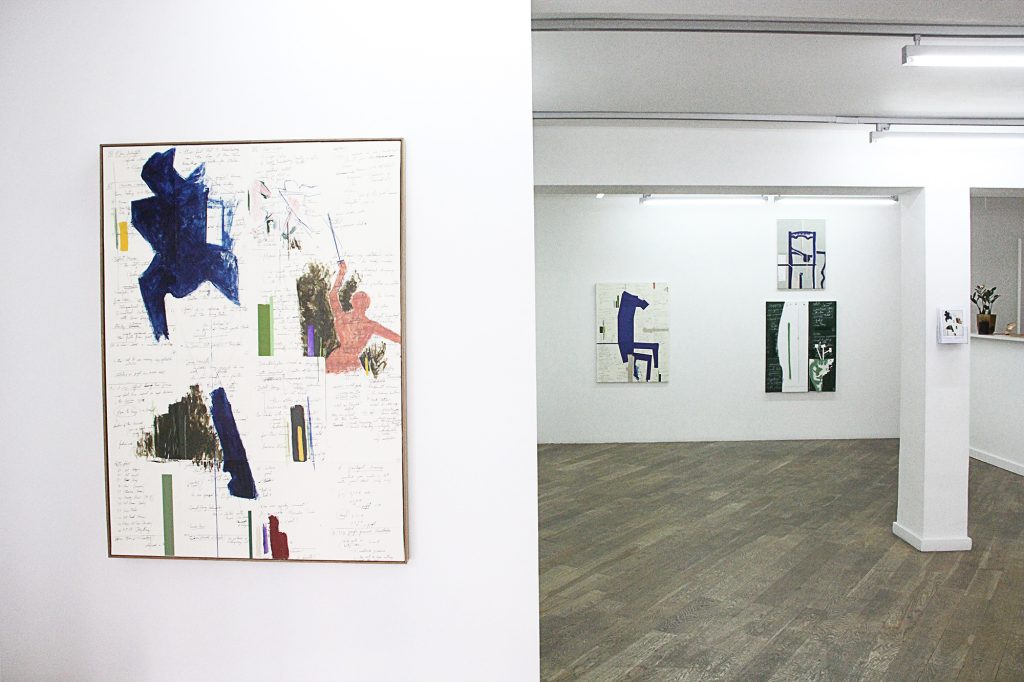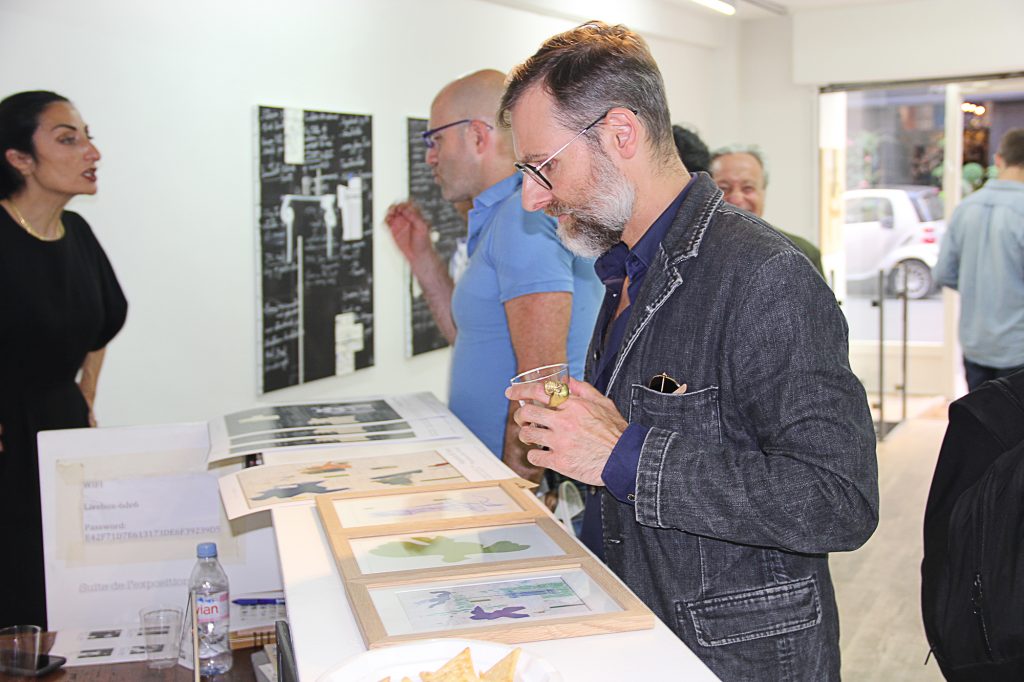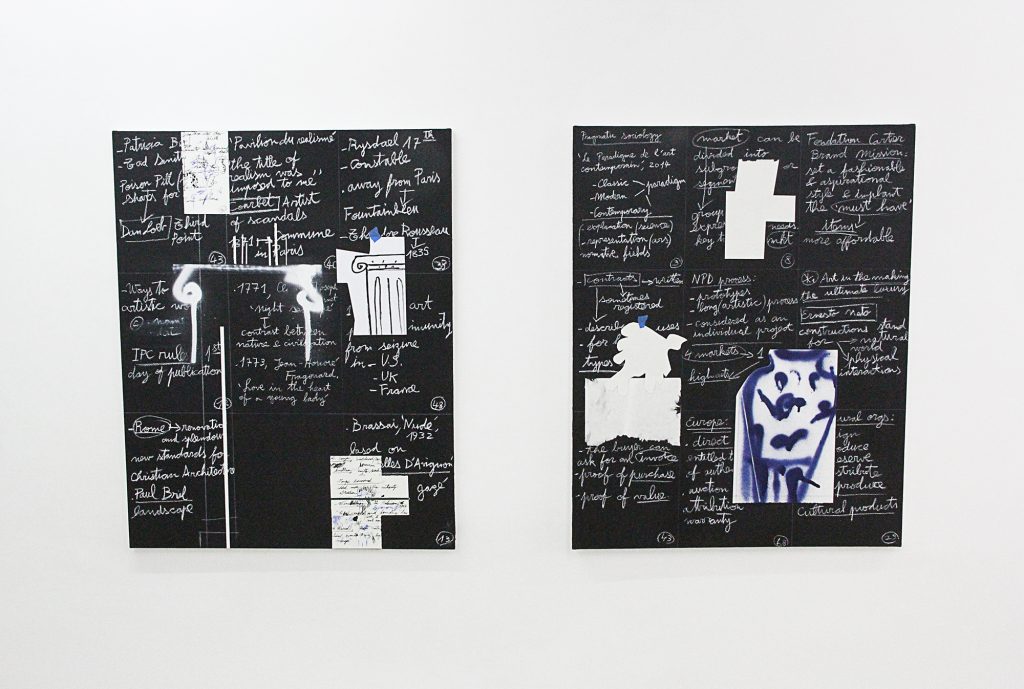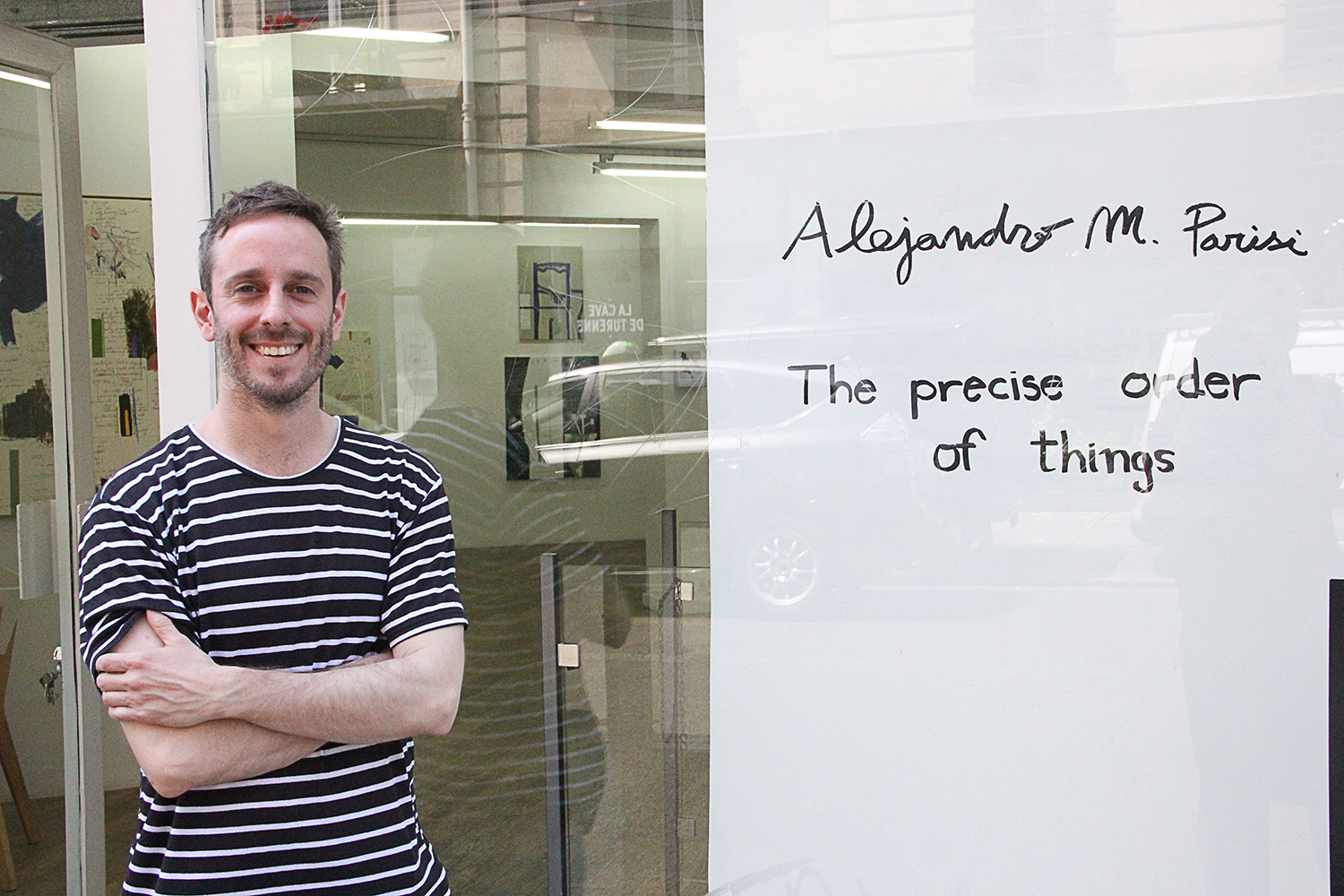Alejandro M. Parisi was born in 1982 in Buenos Aires, Argentina. His works and exhibitions were previously welcomed at the Museo de Bellas Artes de Tandil and Museo de Bellas Artes de Lujan, Fernán Félix de Amador and were widely exhibited in Buenos Aires.
The exhibition ‘The precise order of things’ at Sobering Galerie introduces the artist to the wide Parisian public. From 28 June to 28 July, 2018 gallery exhibits new, never before seen series of paintings as well as artworks of «Academic References» and small formats addressed to the young collectors.
Where does your love for art come from?
I have a good memory of my grandfather teaching me how to draw a pigeon with a few simple lines. Then I remember going to preschool and draw pigeons to all of my classmates and suggested them to color their pigeons in green, yellow or some other color like brown. I was 5 years old and recently I bumped into an ex-classmate on the street and he remembered these pigeons. My grandfather also showed me his sketchbooks full of his drawings, I wasn’t allowed to touch them, but I wanted to stare at them the whole day and they caused a strong effect on me.
About that time, I also remember a painting hanging at my grandmother’s apartment, which obsessed me. I would stare at it as soon as I arrived and I would give it an intense look before we left back home. It was a painting from the beginning of the 19th century, a genre painting, which depicted a lady coming out of the window of a stone house, waving to a man passing by, who was all dress in black and had a bit of a hunchback. The mystery in this scene would haunt me until today.
I would very much love to see that painting again but it was auctioned when I was 10 years old, my grandfather’s sketchbook had a similar destiny, they were lost after his death when I was still a kid.
Where does the artistic process begin for you?
A process might start with an idea (in my case, I only use very general ideas, like for example make green paintings which give the feeling of open space). These ideas come from a need and grow little by little, and they get me working. Then the work itself takes over and I usually forget which idea got me there in the first place. The act of painting takes over my work, and what I produce at a particular period is not only connected by the starting idea but mostly by the visual feeling that I want to produce and which I can only achieve during the work and not from a previous plan.
An artistic process needs a long time to develop and there are no shortcuts to it, overall it is what you want to express, which comes to form your sensibility and your vision of the world and of art. Comes from asking yourself who you are and why you do what you do, and there is no answer but luckily there are paintings which can be made.
It is very important for me to always be excited with what I’m doing and never to get bored, to me it should be a never-ending game, and I think that this feeling gets attached to the work.
A process is to have the right to change from time to time, and it is a reflection of an inner change. It is to admit, for example, that even if you love to see a Picasso exhibition, you can get bored of seeing again another Picasso exhibition, and it is very important to constantly give place to all these perceptions.
You use a lot of references to the history of art in your work. Both and in Academic References and at the series dedicated to objects. How do you do your research?
In the references, I use I don’t really think of them as a research or a study but mostly as a visual game. I find visual filiations in the images I see very easily, I can usually imagine where a certain figure comes from without really proposing myself to do this. I think most painters should have this ability. For this reason, I don’t really think is possible to create a new shape, but I think it is possible to say something new with an existing shape or figure. I want to play with the existing world without pretending that I’m creating from nothing, because I know there was something before and I think is a bit silly to deny this, or sometimes I feel that the so-called ‘new’ is just meant to fool someone who doesn’t know art history, especially what happened in the 20th century, after Duchamp’s revolution in art, where the anti-art idea opened a whole new spectrum of possibilities. Now, in the 21st century, I see art history as the denied, as the new anti-art.

Do your artworks in any way reflect your daily life?
To be able to translate your daily life into your work is an important goal. Everything makes sense when I’m painting, that’s why I want my life to be an extension of my artistic production. I’m always drawing and making notes, which I may use for a painting later. When I started painting I needed to be dressed up with clothes stained with paint in order to feel that I was a painter. It is been many years now that I’m quite properly dressed and it is very rare that I get stained when I’m painting, and I even wear an apron.
Every choice in the work is a reflection of a general vision of the world, even to produce paintings and not video installations for example, and the size of each painting also has a meaning and a consequence. I want to produce a work that reflects who I really am and what I know and what I feel. What I do is a mixture of what I know and what I feel about it, and the result of the painting is the struggle between these two actions (knowing and feeling) and in the end what will give a proper existence to a work is to dare to express a strong choice in what we show and in what we leave outside.
How did your native country Argentina influence you? What is your biggest source of inspiration?
Argentina is a great place to get prepared to do really ambitious things, we have big expectations and we pump up these feelings and then we need to get away, at least that was the case for me. We have great art museums but not as important compared to what you can see in other main cities.
I remember a very important question which I heard and thought about many times: what is Argentinian art? Do we have a personal production or just a mere distortion of the European vision of art? These questions had the effect of setting me free, allowing me to play with the idea of art coming from a European or Western point of view and having the permission to disrespect these pretensions. At the same time, I avoid labeling my art as latin American, or Argentinian or even contemporary, art is always contemporary and it is a global phenomenon to me.
Something I read about the writer Jorge Luis Borges helped me when I was thinking about these questions about Argentina:
‘Por eso repito que no debemos temer y que debemos pensar que nuestro patrimonio es el universo; ensayar todos los temas, y no podemos concretarnos a lo argentino para ser argentinos: porque o ser argentino es una fatalidad, y en ese caso lo seremos de cualquier modo, o ser argentino es una mera afectación, una
máscara.’
Jorge Luis Borges
Therefore I repeat that we shouldn’t be afraid and that we should think that our patrimony is the universe; practice all the topics and not to settle on ‘the Argentine’ to be Argentines: because whether being an Argentine is a doom (destiny), and in that case we will be it anyway, or being an Argentine is just an affectation, a mask.
My main source of inspiration are other artists from all disciplines, I’m very inspired by chefs like Francis Mallmann for example, the way in which he cooks, how he puts the elements on the fire, respecting their time and nature. Also by many writers, like Borges who writes from his condescending bourgeois position without pretending to be a revolutionary and his pure talent makes him a real revolutionary, or Hemingway with his apparently simple straightforwardness and his theory of the iceberg (what we show is just 10% of the content of what we mean) or Phillip Dick’s familiar science fiction.

What attracts you to the Paris art scene?
I was attracted to Paris for multiple reasons, primarily by the amazing art collections and the possibility to spend all the time I wanted in front of works which have a strong effect on me and which I can get into my skin to make me a better painter. I was also attracted by the gastronomy and the roundtables looking at the street and the infinite types of wines and fromages, and by the people making all these possible, all very sensitive and who know what are the real important things in life. I love that everybody knows about art, literature, food, wines, flowers, it is a paradise here.
At first I thought that I could just be happy here because of the city but that the artistic circuit might be a little closed to a foreigner or someone with no professional contacts but then I realized that the energy flows better in this city, if you work hard and if you have something to say and you say it right someone is willing to hear it just for the work you do, not for who you know.
What in your opinion draw people the most to your works?
I guess that I give the possibility to look at each work and feel that it has an existence on its own without having to read something which justifies that existence, even if you can have some questions about my work, they are hopefully answered just by looking at them or at least you can find comfort even without finding those answers. I hope that my work can throw some questions in the shape of unanswered statements, which are those things we ignored about life and it is what we have to live with. The way I hopefully achieve this is by not having a preconceived discourse which I later hide in order for the spectator to find the hidden message. I put myself in the place of the spectator who doesn’t know what it is going to find but I open a spectrum of unanswered questions, which are impossible to solve. There is not a hidden message in them which can be cracked, but different possibilities which can change and which allow us to change in our mind and vision and still look at these works to find new things.
Do you think people tend to overthink the perception of contemporary art?
I believe that to overthink art is a tendency proposed by some actors in the contemporary art scene. And there is public for these kinds of works with their sensibility touched or their will to find new understanding or knowledge about a topic. Of course this is not what I propose and I feel a bit going against what is expected of a work of art now but it is great to feel confident about what you are doing because it comes from your own self, even if it is not celebrated right now, I feel like I’m painting the future, and it is a nice feeling whether it comes true or not.
There is a very good essay by Susan Sontag about this topic called: Against Interpretation, I pretty much share her vision, we don’t always need to be able to read and write an unambiguous political statement about a work of art. Why do we call political art to art? Art is always political, it can’t be non-political. Or contemporary art? How can you produce art now and not be contemporary? Unless you are not producing art but just something else, and in that case, who will be the judge for saying what is art and what not? That goes without saying that new art is rejected most times before being understood and adopted as the new art.
Tell us a little about your next steps?
Actually now I’m looking at the future with some eager to start, after an exhibition like the one at Sobering, there is a kind of a new beginning. I just know the format of the works I want to do and some idea about the materials I’m going to use. The last works I did leave an open path which I’m still going through and I just have to be at the atelier to materialize them. I already produced some sketches and I have a good feeling.
I’m not too afraid of the uncertainty because I’ve been through this many times and the result of the works is actually the way in which I can struggle with this uncertainty and it is always about portraying the process in the canvas. I have to get to work to see how this last experience changed me. We will see what happens, I don’t know either.

Alejandro M.Parisi ” The precise order of things”
28 june- 28 july, 2018
Finissage 26 july from 18h
Sobering Galerie
87, rue de Turenne
75003 Paris
+ 33 (0)9 66 82 04 43
contact@soberinggalerie.com

